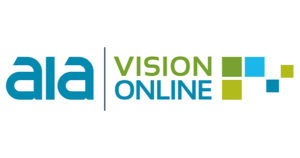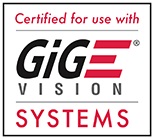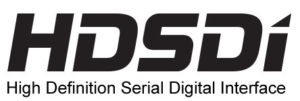
Machine Vision Cameras are manufactured with definite STANDARD’s and INTERFACES to facilitate compatibility across different manufacturer products, ease of design of Machine Vision systems, universal protocols and connections, software portability across different standards and different manufacturer products, ease of replacements etc.
Most of these standards are licensed and followed by AIA – the Automated Imaging Association

which has members from almost all camera and other vision related manufacturers in the world?
Let us have a look into different standards and their unique features:
GigE Vision: GigE Vision® is a global camera interface standard developed using the Gigabit Ethernet communication protocol. GigE Vision allows for fast image transfer using low cost standard cables over very long lengths. With GigE Vision, hardware and software from different vendors can interoperate seamlessly over GigE connections.

GigE Vision is a widely adopted interface around the world, with dozens of leading companies currently offering hundreds of GigE Vision compliant products. GigE Vision offers many benefits including:
| FAST | High bandwidth (125 MB/s) transfers large images quickly in real time |
| ABUNDANT | Un-compromised data transfer up to 100 meters in length |
| STANDARD | Low cost CAT5e or CAT6 cables and standard connectors |
| SCALABLE | Highly scalable to the fast growth of Ethernet |
| LOW COST | Standard hardware and cables allow easy, low cost integration |
GigE Vision Currently in version 2.0
GigE Vision was updated from version 1.2 to version 2.0 in November 2011. Version 2.0 includes non-streaming device control. It accommodates networked video distribution applications that leverage switched Ethernet client/server video networks. Devices such as GigE Vision-enabled lights are automatically recognized by the computers on the network. Version 2.0 introduces support for faster data transfer through 10 gigabit Ethernet and link aggregation. It also enables transmission of compressed images (JPEG, JPEG 2000 and H.264), accurate synchronization of multi-camera systems and enhanced support for multi-tap sensors
The GigE Vision specification relies on GenICam™ to describe the features supported by the camera. This description takes the form of an XML device description file respecting the syntax defined by the GenApi module of the GenICam specification.
“GenICam is a generic programming interface for all kinds of cameras”.
www.genicam.org
To help achieve the goal of coherency between various vision standards, the GigE Vision committee generalized the definition of its pixel formats and created the “Pixel Format Naming Convention”.The GigE Vision standard was developed and is maintained by a dedicated group of companies representing every sector of the vision industry. The AIA oversees the ongoing development and administration of the standard.
To ensure true plug and play compatibility, look for the GigE Vision Logo- only registered compliant products can carry the logo!

Certified For Use With GigE Vision Systems
GigE Vision now offers a special licensing program for Ethernet products which don’t implement the full standard but are configured to easily integrate vision system components and could benefit from GigE Vision branding.
Camera Link – The Only Real-Time Machine Vision Protocol

Camera Link is a hardware specification that standardizes the connection between cameras and frame grabbers. It defines a complete interface which includes provisions for data transfer, camera timing, serial communications, and real time signaling to the camera.
Camera Link was built for real time, high bandwidth (maximum 850 MB/s) parallel communication. It is a well-established and proven industry standard, there are hundreds of Camera Link products on the market today. These compliant products are interoperable, providing users with the flexibility to choose the best product for their needs without worrying about compatibility between different manufacturers. Camera Link has GenICam support for plug and play interoperability.
Camera Link is currently in version 2.0. This version simply consolidated previous updates including Mini Camera Link connectors; Power over Camera Link (PoCL); PoCL-Lite (a smaller minimized PoCL interface);
Camera Link HS –The Machine Vision Protocol Moving Forward

Camera Link HS:
Camera Link HS is designed to specifically meet the needs of vision and imaging applications. It has low latency, low jitter, real-time signals between a camera and a frame grabber carry image data and configuration data. The interface takes the key strengths of Camera Link and adds new features and functions to meet customer’s demands today and tomorrow.
The standard provides:
Scalable Bandwidths from 300 to 16,000 MB/s
Extremely Reliable Data Delivery
Copper or Fiber Optic Cables from 15 to 300+ meters in length
Multi-Vendor Compliant Components Available
IP Cores Available for Quick, Low-Cost Development
USB3 Vision® – High Bandwidth Yet Simple Connectivity

The USB3 Vision® interface is based on the standard USB 3.0 interface and uses USB 3.0 ports that will soon be standard on most PCs (with Windows 7 service pack and Windows 8 native support expected soon). Components from different manufacturers will easily communicate with each other.
The standard is currently in version 1.01.
It is important for all System Integrators, end users, dealers and distributors to know about these interface standards and the uniqueness of each standard to select for their projects.
NEW CAMERA INTERFACE STANDARDS
Apart from Vision Standards fixed and maintained by AIA – Automated Imaging Association, there are different other camera interface standards available from different manufacturers across the globe. Let us go through few interfaces which are popular now.
COAXPRESS – Worlds leading interface standard for high speed imaging.

CoaXPress (CXP) is the world’s leading standard for high-speed imaging in professional and industrial imaging applications such as machine vision, medical imaging, life sciences, broadcast and defence.
CoaXPress (CXP) combines the traditional simplicity of coaxial cable with state of the art high-speed serial data technology. The combination of these two features – coaxial cable and “express” speed – provides a highly desirable solution for high-speed imaging and data transmission.The standard is hosted by JIIA with working groups from companies around the world.
CoaXPress (CXP) is an asymmetric high-speed point to point serial communication standard for the transmission of video and still images, scalable over single or multiple coaxial cables. It has a high speed downlink of up to 6.25Gbps per cable for video, images and data, plus a lower speed, 20Mbps uplink for communications and control. Power is also available over the cable (“Power-over-Coax”) and cable lengths of greater than 100m may be achieved.
Technical summary:
High-speed data rates: up to 6.25 Gbps over a single coax cable and scalable for multiple cables. (e.g. 4 cables gives 25 Gbps, 8 cables give 50 Gbps etc).
HD SDI:

HD-SDI stands for High-Definition Serial Digital Interface. It is the common term for a high-definition digital video transmission standard known as SMPTE 292M.
The SMPTE 292M standard is part of a family of Serial Digital Interface standards that use a coaxial cable to transport uncompressed digital video – currently still predominantly used in professional TV studios.
HD-SDI is a standard for transmitting uncompressed broadcast-grade HD video signals over short distances (although longer distances are possible with fibre optic cables).
The 292M interface of the HD-SDI standard has a nominal data rate of 1.5 Gbps. To be precise, the standard specifies two exact bit rates:
a) 1.485 Gbps – Supports 60 Hz, 50 Hz, 30 Hz, 25 Hz, 24 Hz and other commonly used frame rates.
b) 1.485/1.001 Gbps – Allows the standard to support video formats with frame rates of 59.94 Hz, 29.97 Hz and 23.98 Hz, making it upwards compatible with existing NTSC (analogue video) systems.
Cameras are available in following output modes:
HD-SDI:720p 10bit 4:2:2: 50, 59.94, 60 and 1080p 10bit 4:2:2: 23.98, 24, 25, 29.97, 30
Resolution: 1920 x 720 and 1920 x 1080 with at least 25fps.
These cameras which were targeted to broadcast applications are now used in Machine Vision applications also.
Suitable Frame grabbers are available for PCs and also laptops to capture and process this video. HD SDI video out can be connected to modern day display devices directly or by using HDMI converters to TV displays.
Online Solutions (Imaging) Pvt. Ltd., is a two decade old company that can help customers to choose right interface standard appropriate for the projects. www.onlsol.com has a menu named support under which a presale section is present for the customers to login and place their project request using the project question form. The form will be processed and a contact will be established within 48 hours.
Foot Note:
GigE Vision®, Camera Link®, Camera Link HS® and USB3 Vision™ are trademarks owned by the AIA and may not be used without the authorization of the AIA. All other trademarks are the marks of their respective owners.
This blog write up is a collection of data from AIA. Online Solutions (Imaging)) Pvt. Ltd., India is an AIA member.
We'll be glad to help you! Please contact our Sales Team for more information.
We'll be glad to help you! Please contact our Sales Team for more information.